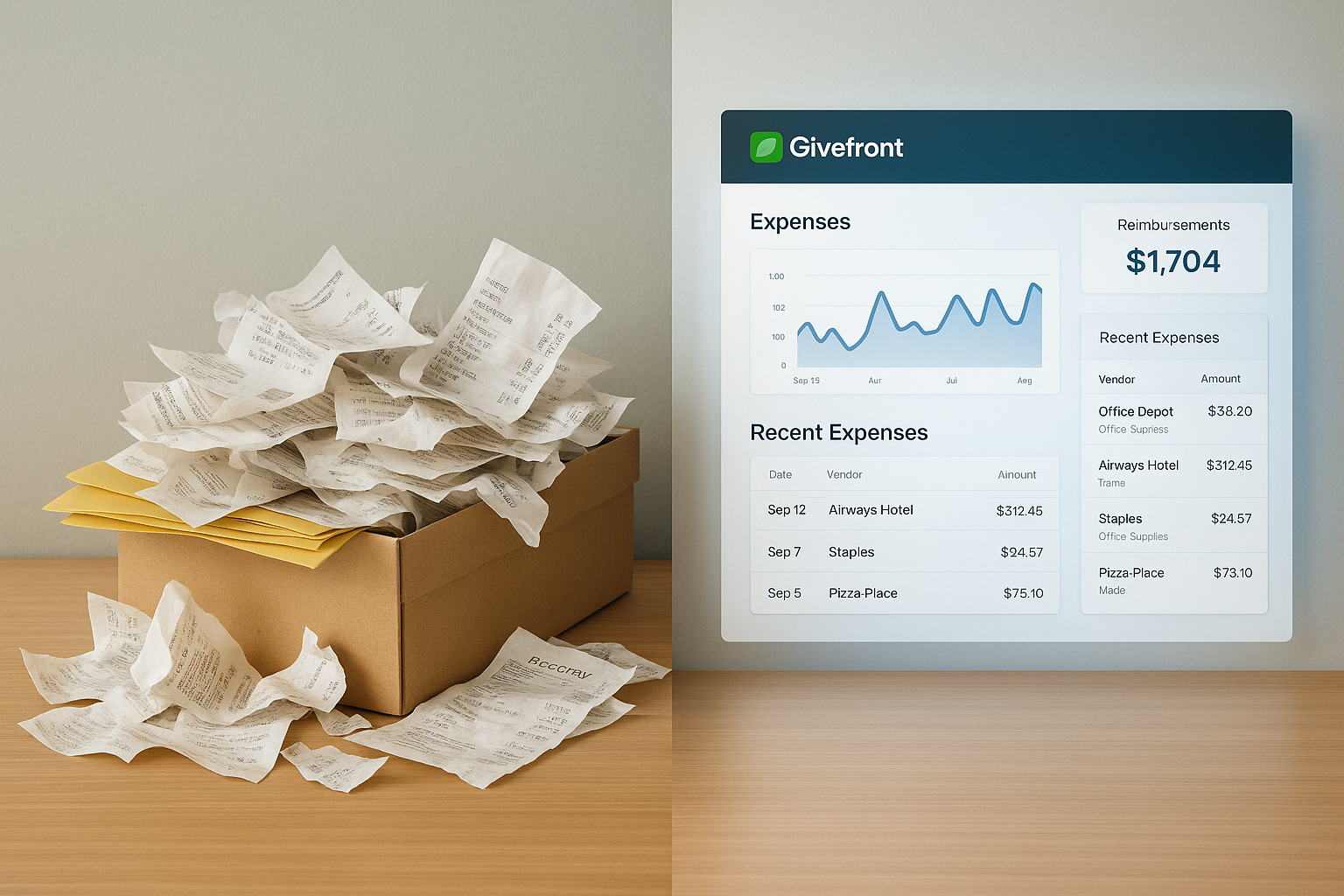For decades, nonprofits have struggled with the same operational bottlenecks: a shoebox full of receipts, reimbursement forms buried in inboxes, and end-of-month spreadsheets patched together just in time for board meetings or grant reports. But in a sector that champions trust and transparency, the stakes for financial accountability have never been higher.
Expense tracking is more than a back-office nuisance—it’s a cornerstone of mission integrity.
If your team still relies on handwritten expense logs, forwarded PDFs, or delayed approvals, it may be time to rethink your systems. This article walks through the real cost of outdated processes, outlines what modern expense management looks like, and offers a roadmap for moving toward a more accountable, streamlined future.
Why Expense Tracking Matters More Than Ever
Nonprofits aren’t just stewards of dollars—they're stewards of public trust. Every donation, grant disbursement, and restricted fund comes with the expectation of careful, mission-aligned use.
Without a clear expense process:
- Staff time is wasted chasing receipts and approvals
- Reimbursements are delayed or disputed
- Restricted funds are at risk of misuse
- Audits and 990 filings become reactive firefighting instead of organized reporting
In some cases, poor tracking can jeopardize funding altogether. A 2022 study by the National Council of Nonprofits found that over 18% of surveyed funders reduced or paused funding due to financial reporting issues—most commonly tied to unclear expense documentation.
The Hidden Costs of Manual Expense Processes
While many nonprofits avoid modern expense platforms due to budget concerns, the real cost is often hidden in inefficiency:
- Hours lost per staff member submitting or tracking down receipts
- Late reimbursement cycles, leading to frustration and equity issues among lower-income employees
- Inaccurate allocations, which complicate grant reporting and funder compliance
- Paper trails that break down, especially in hybrid or remote environments
When receipts are emailed, approvals are verbal, and expense tags are “remembered” later, it’s not just error-prone—it’s impossible to scale.
What a Modern Expense System Looks Like
An effective system for nonprofit expense tracking should do more than organize receipts. It should:
- Capture receipts automatically through email or SMS
- Integrate with organizational budgets by program, grant, or fund
- Include built-in approval workflows, so managers can sign off before spending
- Enforce policies and caps, reducing accidental overages
- Offer audit-ready reporting, aligned with 990 and grant documentation requirements
A modern platform also ensures consistency. With automated tagging and policy enforcement, there's no need to train each new staffer on nuanced reimbursement rules—they’re built into the system.
Reimbursements vs. Direct Spend: Rethinking the Process
Many nonprofits rely heavily on reimbursements because they don’t have the infrastructure to support direct staff spending. But reimbursements carry inherent risks:
- Delayed submission results in lost receipts or ineligible claims
- Equity concerns arise when lower-income staff front mission-related costs
- Compliance gaps emerge when purchases happen outside policy scope
A better approach is to empower staff with organization-controlled purchasing methods—like prepaid cards or controlled debit—with clear limits and real-time oversight. This keeps control in your hands while removing financial burden from employees.
Building a Culture of Financial Accountability
Tools matter—but culture is what sustains good practice. As you modernize your expense tracking, ensure your team is aligned on:
- Why accountability matters, not just to funders, but to the communities you serve
- What the process is, clearly documented and accessible in internal systems
- Who approves what, with transparency and speed
Regular trainings, feedback loops, and open channels for questions are just as important as software.
A Real-World Example
Consider a community arts nonprofit that implemented structured expense cards and auto-receipt tracking after a delayed audit revealed several reimbursed purchases lacked fund attribution. Within six months of the new system:
- Staff time spent on monthly reporting dropped by 60%
- Their finance team completed 990 preparation a full month ahead of schedule
- A multi-year foundation grant was renewed, citing “clearer and more consistent financial reporting”
Small changes in tracking can have outsized effects across operations, trust, and funding.
Tools That Can Help
Some of the most effective platforms for nonprofit expense tracking include:
- Givefront – Designed for nonprofit-specific compliance, budget tagging, and grant-ready reporting
- Expensify – Popular with nonprofits but best for larger teams
- QuickBooks Online – With added integrations, supports tagged spending and reimbursements
Each platform has trade-offs, but the core advantage is the same: visibility, control, and audit readiness.
Final Thoughts
As your organization grows, so does the complexity of its financial footprint. Chasing receipts may have worked when your team was small—but growth demands structure. By embracing modern tools and clear policies, nonprofits can shift from reactive expense management to proactive financial leadership.
Accountability doesn’t start at audit—it starts at the point of purchase.
.png)




















.png)
.png)

.png)